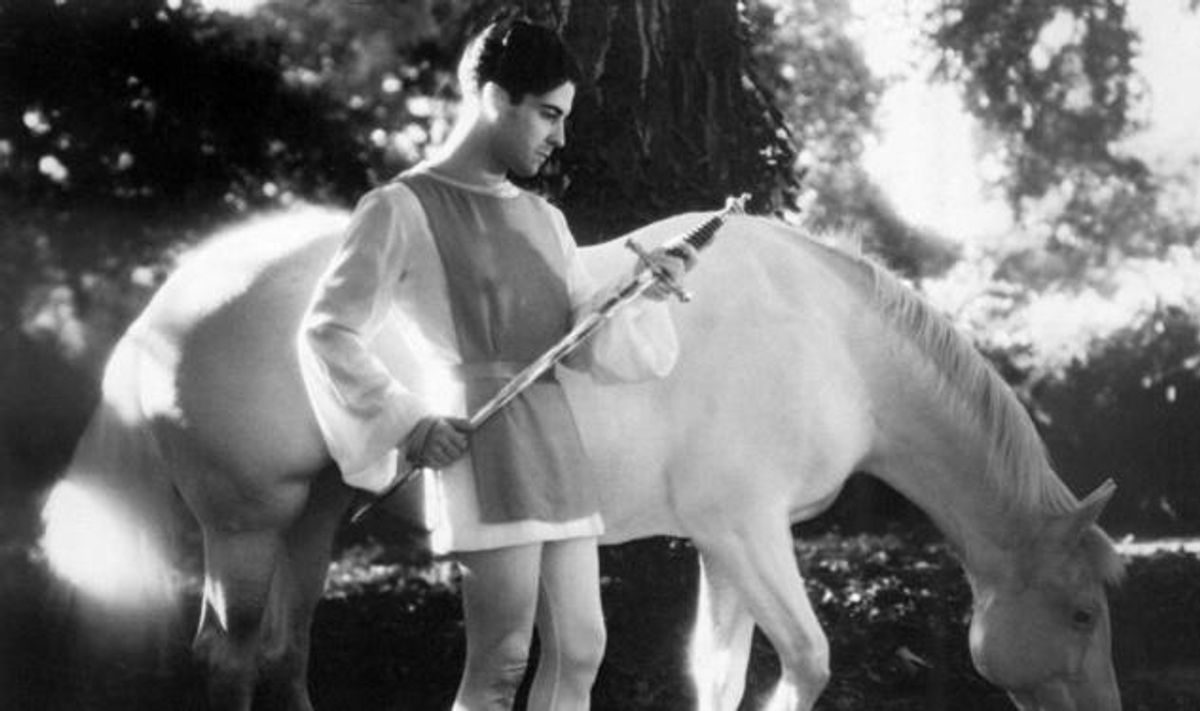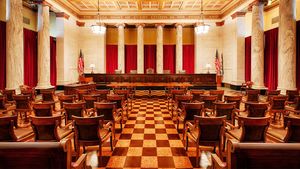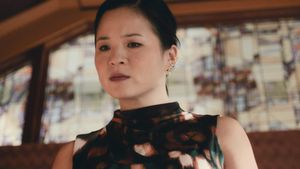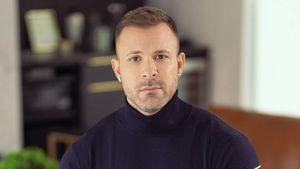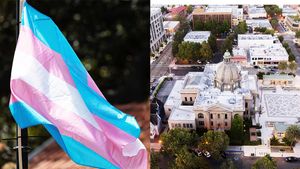Ramon Novarro's remembered more today for his death than for his life, which began 115 years ago today, on February 6, 1899, in Durango, Mexico. It was there that Novarro, born Jose Ramon Gil Samaniego, was raised by an elite family in the midst of the Mexican Revolution. With all the turmoil, they shuttled between Durango and Mexico City before eventually moving to Los Angeles.
Novarro, preternaturally beautiful, soon found himself into bit parts, but influential friends, including actor/director Rex Ingram and his cousin actress Dolores del Rio, knew he was destined for something more and in the 1923 Novarro threw himself head first into the silent film scene. His first big role was in Scaramouche, but he didn't truly hit it big until the 1925 silent classic Ben-Hur. His costumes left little to the imagination and soon all imaginations were filled with thoughts of Novarro.
The "Latin lover's" fame only grew after rival Valentino's death in 1926. He worked steadily for the next ten years, and then less steadily. Sure, he scored some television cameos and smaller roles and was still adored by tens of thousands -- as late as 1927 he was called "the last Latin lover" by Hollywood columnist Bob Thomas -- but drinking and drugs became more prevalent, as did his own sense of obsolescence.
READ: The Hustlers and the Movie Star
By the 1960s Novarro was relying more and more on hustlers. He had had a lover, legendary Hollywood journalist Herbert Howe, but it fizzled and hustlers were an easy lay that required little emotional involvement and let Novarro relish in the glow of his fleeting fame. It was this penchant that led to his death on October 30, 1968.
We will probably never know precisely what happened that night, but we do know that Novarro invited over two brothers, Paul and Tommy Ferguson, 22 and 17, that he got intimate with one, Paul, and ended up dead. Initially the motive seemed to be robbery. And that's how the Ferguson brothers had hoped it would read: after Novarro was dead they tied him up and made it look as if he had been tortured for money. We would only later learn, though, that though Tommy tried to take the blame at the end of the trial, in fact Paul had gone into Novarro's bedroom. And, as he told Out's William Van Meter in 2012, he blacked out and came to as Novarro was making moves, freaked out and hit him. "The next thing I knew, I find myself being overwhelmed by this body, and just, like, hairiness, and I guess being kissed or whatever the fuck it was. And I come out of that, I go, 'Get the fuck-,' and boom, and I walked out. So, that's what happened. So of murder I was innocent. Of manslaughter, I wasn't innocent. Even of manslaughter, maybe you could say I was innocent, but I was guilty of hitting him. I did hit him, but I did it in a drunken stupor."
The former boxer also blamed his fighter's instincts and Novarro's own drunkeness. "I'll tell you what, I'm a boxer," he said. "When I hit you, I probably hit you three or four times. I remember standing beside this man and coming out of this heavy drunken fog and hitting him and seeing him fall on the bed. But I didn't do anything more than that. Mr. Novarro died because he was so drunk that the blood in his throat; the involuntary muscle in his throat didn't work because the alcohol suppressed it. If he had turned his head, if he had been a little more sober, he would not have died."
Joan Didion later used Novarro's murder as an allegory for the changing times that were the late 1960s in Los Angeles. "In my neighborhood in California we did not bless the door that opened wide to stranger as kin," she wrote in the 1979 collection The White Album. "Paul and Tommy Scott Ferguson were the strangers at Ramon Novarros' door. Charles Manson was the stranger at Rosemary and Leno LaBianca's door..."

Novarro's murder was the end of an era for some. For others, primarily in LGBT circles, Novarro's death became -- and in some ways remains -- a stand-in for the violence born from homophobia and closets. On a wider scale, though, Novarro's murder is less about him and more about the Ferguson brothers. In the same way that Truman Capote turned Dick Hickock and Perry Smith into stars with the 1965 book In Cold Blood, Paul and Tommy Ferguson, brooding but handsome, became idols in their own way, sought after by women while in prison. Pop culture fed off them, too: tabloids followed their every move, and traced their sordid histories, including Paul's stint as a nude model for gay magazines. Meanwhile, Truman Capote interviewed Paul for television in 1973 and Novarro's death, and the men's roles, would become fodder for countless sensational books and "biographies."
Though they were sentenced to life in prison, both were paroled within seven years. Both went on to commit more crimes. Tommy, by now deep into drugs, was arrested in 1987 for raping a woman. He got out in 1990, bounced in and out of prison and then, in 2005, he killed himself. As for Paul, the more creative of the two: he did well in prison, appearing on radio shows, writing articles and even winning a 1975 PEN Award for a short story called "Dream No Dream." He too was paroled and started a few business, married and had a child but is now serving a 60 year sentence for rape and sodomy. He's still something of a celebrity on the prison circuit. Ramon Novarro, meanwhile, remains synonymous with his tragic secrets and death.
READ: The Hustlers and the Movie Star
